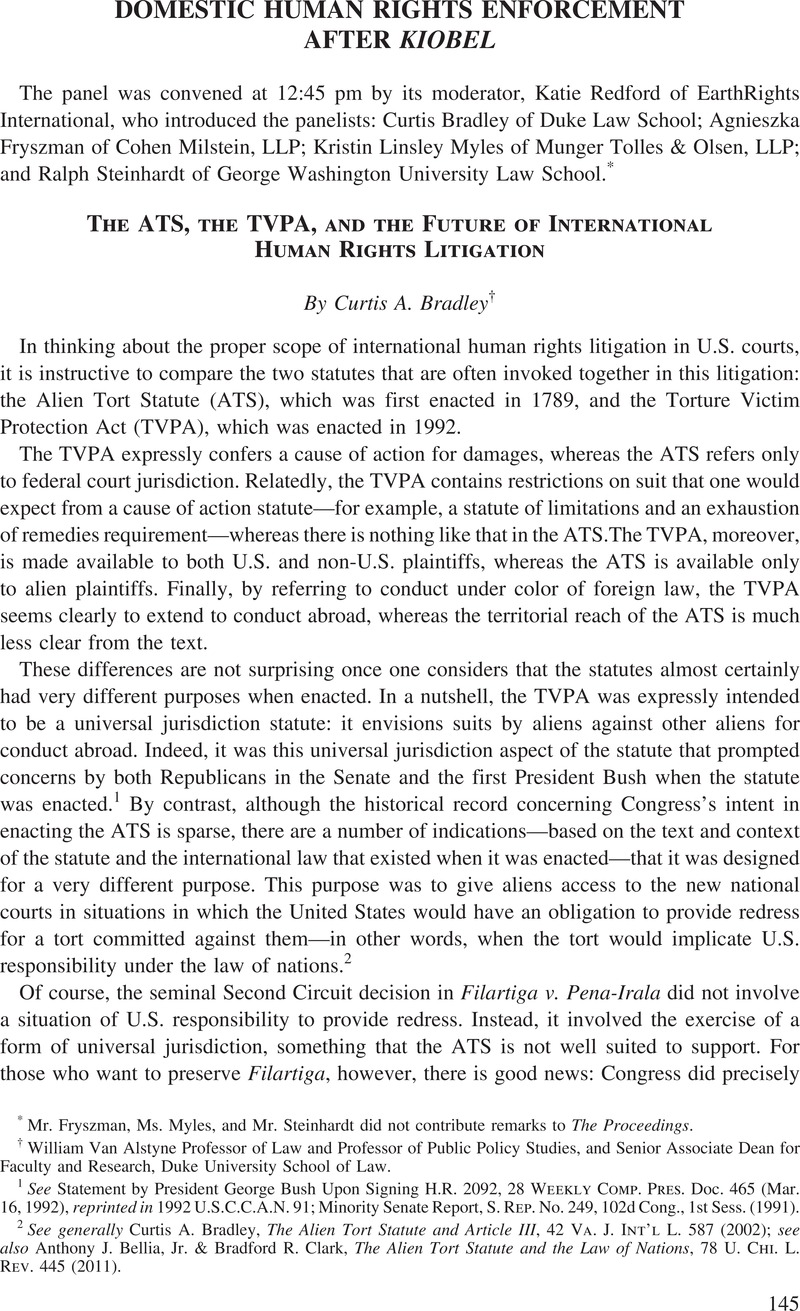Article contents
The ATS, the TVPA, and the Future of International Human Rights Litigation
Published online by Cambridge University Press: 20 January 2017
Abstract

- Type
- Domestic Human Rights Enforcement After Kiobel
- Information
- Copyright
- Copyright © American Society of International Law 2015
References
* Mr. Fryszman, Ms. Myles, and Mr. Steinhardt did not contribute remarks to The Proceedings.
1 See Statement by President George Bush Upon Signing H.R. 2092, 28 Weekly Comp. Pres. Doc. 465 (Mar. 16, 1992), reprinted in 1992 U.S.C.C.A.N. 91; Minority Senate Report, S. Rep. No. 249, 102d Cong., 1st Sess. (1991).
2 See generally Bradley, Curtis A., The Alien Tort Statute and Article III, 42 Va. J. Int’l L. 587 (2002)Google Scholar; see also Bellia, Anthony J. Jr., & Clark, Bradford R., The Alien Tort Statute and the Law of Nations, 78 U. Chi. L. Rev. 445 (2011)Google Scholar.
3 See Bradley, Curtis A. & Helfer, Laurence R., International Law and the U.S. Common Law of Foreign Official Immunity, 2010 Sup. Ct. Rev. 213, 266.Google Scholar
4 See, e.g., Balintulo v. Daimler AG, 727 F.3d 174, 192 (2d Cir. 2013) (“In all cases, therefore the ATS does not permit claims based on illegal conduct that occurred entirely in the territory of another sovereign.”).
- 1
- Cited by


